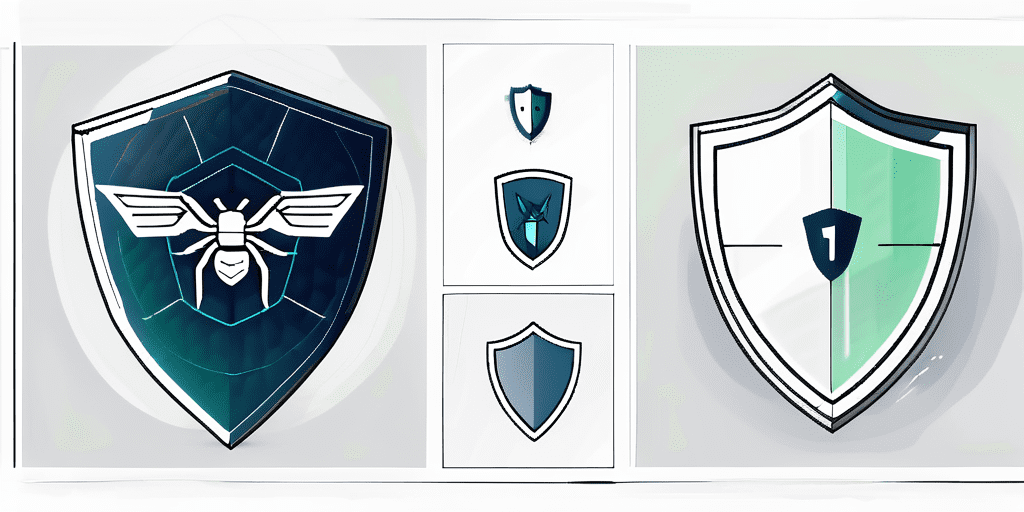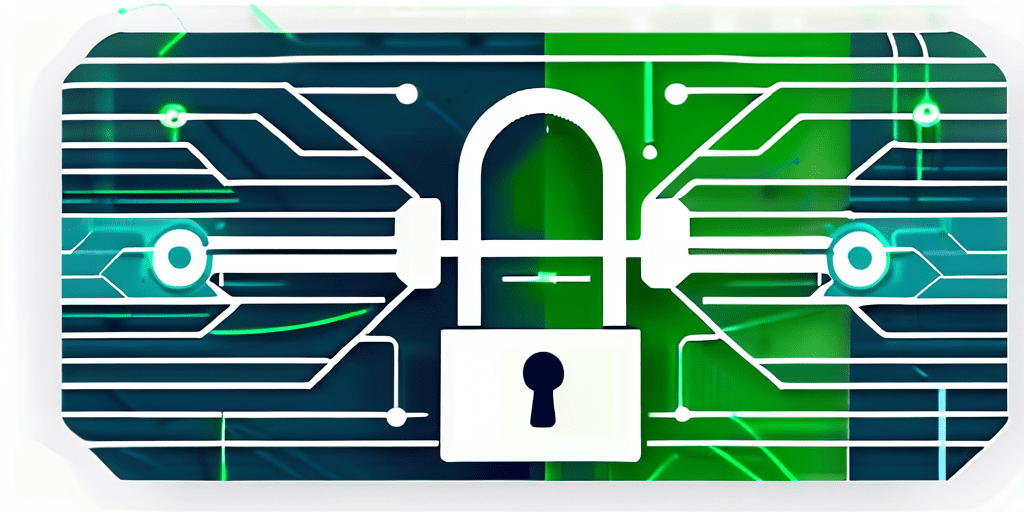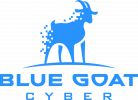Updated April 26, 2025
In today’s digital landscape, where cyber threats are ever-evolving, ensuring the security of our applications has become paramount. This is where the OWASP Top 10 Framework comes into play. Organizations can enhance their application security and protect sensitive data from malicious actors by understanding, implementing, and maintaining this framework.
Understanding the OWASP Top 10 Framework
The OWASP Top 10 Framework is a widely recognized and respected resource that guides the most critical web application security risks. It helps developers and security professionals identify vulnerabilities and implement effective security controls. By familiarizing ourselves with this framework, we can gain valuable insights into the key components of secure application development.

Staying ahead of potential threats is crucial for web application security. The OWASP Top 10 Framework plays a pivotal role in this regard, as it offers a comprehensive approach to understanding and addressing the most prevalent security risks faced by web applications today.
Developed and maintained by the Open Web Application Security Project (OWASP), the framework is regularly updated to reflect the evolving threat landscape and the emergence of new attack vectors. It serves as a valuable resource for organizations and individuals looking to enhance the security posture of their web applications.
The Importance of Application Security
Application security is of utmost importance in today’s interconnected world. With the proliferation of data breaches, organizations are increasingly realizing the need to secure their applications from potential threats. By adopting industry-standard frameworks like OWASP, businesses can proactively protect their systems and ensure their data’s confidentiality, integrity, and availability.
Ensuring application security is not just about protecting sensitive data; it also helps maintain users’ trust and confidence. In a world where online transactions and interactions have become the norm, users expect their personal information to be safeguarded. Failure to meet these expectations can result in reputational damage and loss of business.
Compliance with regulatory requirements is another driving factor behind the importance of application security. Many industries are subject to strict data protection regulations, such as the General Data Protection Regulation (GDPR) in the European Union. Non-compliance can lead to severe penalties and legal consequences.
Key Components of the OWASP Top 10 Framework
The OWASP Top 10 Framework encompasses ten critical web application security risks. These risks include injection attacks, broken authentication and session management, cross-site scripting (XSS), insecure direct object references, security misconfigurations, sensitive data exposure, missing function-level access control, cross-site request forgery (CSRF), using components with known vulnerabilities, and insufficient logging and monitoring.
Each of these risks poses a unique threat to application security, and addressing them requires a comprehensive understanding of their implications and potential mitigation measures.
Injection attacks, for example, involve malicious code injected into an application’s input fields, potentially leading to unauthorized access or data manipulation. Understanding how to sanitize and validate user input properly is crucial in preventing such attacks.
On the other hand, broken authentication and session management can result in unauthorized access to user accounts or session hijacking. Implementing secure authentication mechanisms, such as strong password policies and session timeouts, is essential to mitigate these risks.
Cross-site scripting (XSS) is another prevalent vulnerability that allows attackers to inject malicious scripts into web pages viewed by other users. Developers can prevent these attacks by understanding the different types of XSS attacks and implementing proper input validation and output encoding.
These are just a few examples of the risks covered by the OWASP Top 10 Framework. By addressing each risk and implementing the recommended security controls, organizations can significantly enhance the security of their web applications.
Implementing the OWASP Top 10 Framework
Integrating the OWASP Top 10 Framework into your security strategy is crucial for building secure applications. By following the recommended steps, you can mitigate vulnerabilities and strengthen your systems’ overall security posture.

The OWASP Top 10 Framework comprehensively identifies the most critical web application security risks. It provides organizations with a roadmap to prioritize and address these risks effectively. By incorporating this framework into your security strategy, you can protect your applications against common vulnerabilities.
One of the first steps in implementing the OWASP Top 10 Framework is to educate developers and security personnel about its significance. Conducting training sessions and workshops can help ensure that the team is well-versed in secure coding practices and understands the potential risks associated with insecure applications.
Next, organizations should assess their existing applications for vulnerabilities aligned with the OWASP Top 10 risks. This involves performing regular scans, penetration testing, and code reviews to identify security weaknesses that need to be addressed. These assessments provide valuable insights into your applications’ security and help prioritize remediation efforts.
Once vulnerabilities are identified, it is essential to prioritize them based on their potential impact and exploitability. This step allows organizations to focus on addressing the most critical risks first. Organizations can prevent future occurrences of these vulnerabilities by developing a plan to mitigate these risks and implementing suitable security controls.
Overcoming challenges in implementing the OWASP Top 10 Framework is crucial for its successful adoption. One of the common challenges organizations face is a shift in the development process. Integrating security practices into the development lifecycle may require additional time and effort. However, it is essential to emphasize the significance of application security and its long-term benefits. By demonstrating the potential consequences of an insecure application and highlighting success stories, stakeholders can be convinced of the necessity to prioritize security alongside development speed.
Another challenge organizations may encounter is resistance from stakeholders who prioritize speed over security. Effective communication is key to addressing this challenge. By fostering collaboration and knowledge sharing between developers and security teams, organizations can ensure that security controls are implemented without hindering the development process. This collaboration helps bridge the gap between security and development and leads to effective OWASP implementation.
Benefits of Using the OWASP Top 10 Framework
Moving beyond the implementation phase, organizations can reap numerous benefits by leveraging the OWASP Top 10 Framework in their application development and security strategy.
Enhancing Application Security with OWASP
By aligning with the OWASP Top 10 Framework, organizations can significantly enhance the security of their applications. This results in a reduced risk of data breaches, improved customer trust, and protection against financial loss and reputation damage from security incidents.
Implementing the OWASP Top 10 Framework allows organizations to identify and address common vulnerabilities that attackers frequently exploit. By following the guidelines provided by OWASP, organizations can proactively protect their applications from threats such as cross-site scripting (XSS), injection attacks, and insecure direct object references.
OWASP promotes secure coding practices and encourages developers to adopt a security mindset throughout the entire software development lifecycle. This approach helps build robust and resilient applications that are less susceptible to attacks.
The Role of OWASP in Compliance and Risk Management
Adhering to industry-standard frameworks like OWASP also facilitates compliance with regulatory requirements. Many regulatory bodies mandate the adoption of recognized security frameworks, making OWASP invaluable in ensuring compliance and reducing legal and regulatory risks.
By implementing the OWASP Top 10 Framework, organizations can demonstrate their commitment to security best practices and meet the necessary compliance standards. This not only helps them avoid penalties and fines but also enhances their reputation as responsible and trustworthy entities.
Additionally, risk management becomes more effective when based on a well-established framework. OWASP provides a clear and structured set of guidelines that can aid in assessing and mitigating risks related to web application security.
Organizations can use OWASP as a reference to identify potential vulnerabilities and prioritize their remediation efforts. By first addressing the most critical risks, organizations can effectively manage their security posture and reduce the likelihood of successful attacks.
Maintaining Security with OWASP Top 10 Framework
Security is not a one-time task but an ongoing process. Organizations must adopt a proactive approach to remain protected from emerging threats. The OWASP community recognizes this, regularly updating and revising the OWASP Top 10 Framework to keep it relevant in an ever-changing threat landscape.
Regular Updates and Revisions of OWASP
As new vulnerabilities and attack vectors emerge, the OWASP community diligently updates the framework accordingly. This ensures that users stay ahead of the curve and can continuously adapt their security measures to counter the latest threats.
One key reason the OWASP Top 10 Framework is so effective is its commitment to regular updates and revisions. The framework is not a static document but a living, breathing entity that evolves with the changing cybersecurity landscape. The OWASP community collaborates with security experts, developers, and researchers to identify new vulnerabilities and attack techniques.
Once these new threats are identified, the community analyzes and understands them. This process involves extensive research, testing, and analysis to understand the vulnerabilities and their potential impact comprehensively. The findings are then incorporated into the OWASP Top 10 Framework, ensuring that it remains up-to-date and relevant.
By constantly updating and revising the framework, the OWASP community ensures that organizations can access the latest knowledge and tools to protect their applications and systems. This proactive approach is crucial in the ever-evolving world of cybersecurity, where new threats can emerge at any time.
Long-term Benefits of Consistent OWASP Use
Consistent use of the OWASP Top 10 Framework provides organizations with long-term benefits. By integrating secure coding practices into the development lifecycle, businesses can reduce the frequency and impact of application security incidents. This leads to significant cost savings and helps build a robust security culture within the organization.
Organizations adopting the OWASP Top 10 Framework as a standard practice create a strong foundation for secure software development. This framework provides developers with guidelines and best practices, ensuring that security is considered at every stage of the development process.
By consistently implementing these secure coding practices, organizations can minimize the number of vulnerabilities in their applications. This, in turn, reduces the likelihood of successful attacks and data breaches. The cost savings associated with preventing security incidents can be substantial, as organizations can avoid a breach’s financial and reputational damage.
Consistent use of the OWASP Top 10 Framework helps build a culture of security within the organization. When developers are trained to prioritize security and follow best practices, it becomes ingrained in their mindset. This leads to a more proactive approach to security, where potential vulnerabilities are identified and addressed early in development.
Ultimately, the long-term benefits of consistent OWASP use go beyond just protecting individual applications. It helps organizations establish a strong security posture, instilling confidence in customers, partners, and stakeholders. This can be a competitive advantage, as organizations prioritizing security are seen as trustworthy and reliable.
Future of Application Security and OWASP
The landscape of application security is ever-evolving, with new technologies and attack vectors emerging regularly. The OWASP Top 10 Framework is vital in shaping future security practices and securing next-generation applications.
Emerging Trends in Application Security
As technologies like cloud computing, mobile applications, and the Internet of Things (IoT) continue to advance, application security faces new challenges. OWASP is at the forefront of identifying and addressing these challenges, ensuring developers and security professionals have the necessary guidance to tackle them effectively.
OWASP’s Role in Shaping Future Security Practices
The OWASP community remains dedicated to fostering the adoption of secure coding practices, educating professionals, and providing resources to address emerging threats. Their research and contributions continue to shape the future of application security, making OWASP an invaluable resource for anyone developing or securing web applications.
Conclusion
Leveraging the OWASP Top 10 Framework is crucial for organizations prioritizing secure application development. By understanding, implementing, and maintaining this framework, businesses can reduce the risk of security incidents, enhance customer trust, and remain compliant with regulatory requirements. The continuous updates and community-driven nature of OWASP ensure that it remains a relevant and valuable resource for securing applications in the face of evolving threats. Adopting the OWASP Top 10 Framework is a proactive step towards building a robust security posture and protecting sensitive data in an increasingly interconnected world.
As you navigate the complexities of application security and strive to implement the OWASP Top 10 Framework, remember that expert guidance can make all the difference. Blue Goat Cyber, a Veteran-Owned business specializing in B2B cybersecurity services, stands ready to assist you. Our expertise in medical device cybersecurity, penetration testing, and compliance with HIPAA, FDA, SOC 2, and PCI standards ensures that your applications are secure and meet the highest regulatory requirements.
Contact us today for cybersecurity help and partner with a team passionate about protecting your business and products from attackers.
OWASP Top Ten FAQs
The OWASP Top 10 is a globally recognized list published by the Open Web Application Security Project (OWASP) that identifies the ten most critical web application security risks. It serves as a foundational resource for developers, security teams, and regulatory bodies.
Medical devices often include web applications or APIs as part of their ecosystem. Understanding and mitigating the OWASP Top 10 risks helps manufacturers protect sensitive patient data, ensure device integrity, and meet regulatory cybersecurity expectations.
As of the latest version, the risks are:
Broken Access Control
Cryptographic Failures
Injection
Insecure Design
Security Misconfiguration
Vulnerable and Outdated Components
Identification and Authentication Failures
Software and Data Integrity Failures
Security Logging and Monitoring Failures
Server-Side Request Forgery (SSRF)
Typically, the OWASP Top 10 is updated every three to four years to reflect the evolving threat landscape, real-world breach data, and changes in application development practices.
Organizations should use it as a baseline for:
Risk assessments
Secure coding guidelines
Application security testing
Developer training programs It’s a practical tool for prioritizing remediation efforts based on real-world threats.
While not a formal regulation, many cybersecurity frameworks and regulatory bodies (including the FDA, ISO standards, and GDPR) reference OWASP Top 10 concepts. Demonstrating alignment can help meet cybersecurity due diligence expectations.
The OWASP Top 10 fits seamlessly into DevSecOps by providing clear targets for automated scanning, manual code reviews, secure architecture design, and ongoing vulnerability management throughout the software development lifecycle.
The main OWASP Top 10 focuses on web applications, but OWASP also maintains separate Top 10 lists for API Security and Mobile Security. These complementary guides are critical for connected medical devices and healthcare apps.
Many organizations treat it as a checklist rather than integrating its principles into broader risk management and secure development practices. Real security comes from building a culture of cybersecurity, not just checking boxes.
Blue Goat Cyber assists clients by:
Conducting web and API penetration testing
Integrating secure coding standards
Providing developer and security team training
Implementing continuous security validation tools
We ensure your applications—and your connected devices—are resilient against the threats outlined in the OWASP Top 10.
